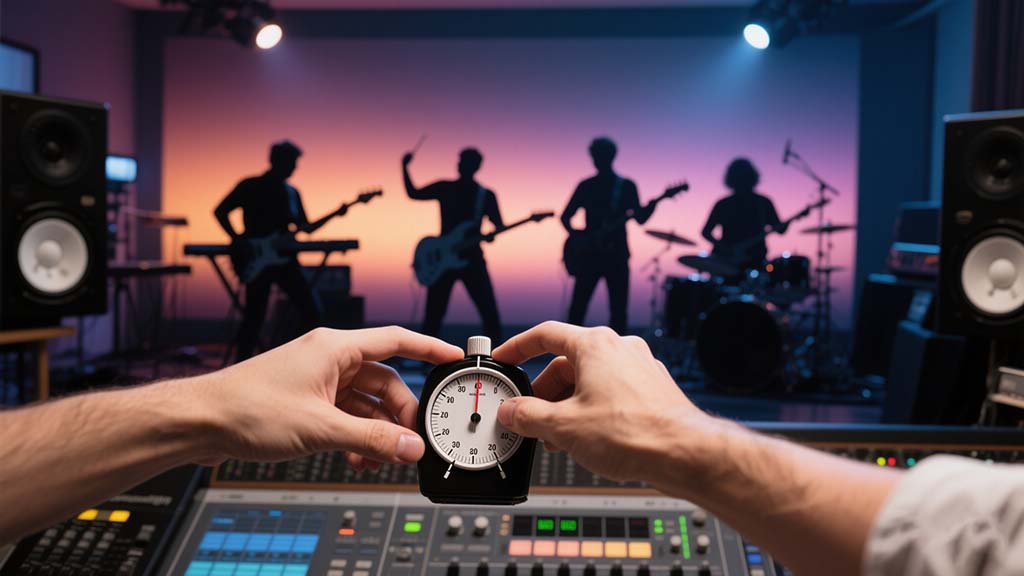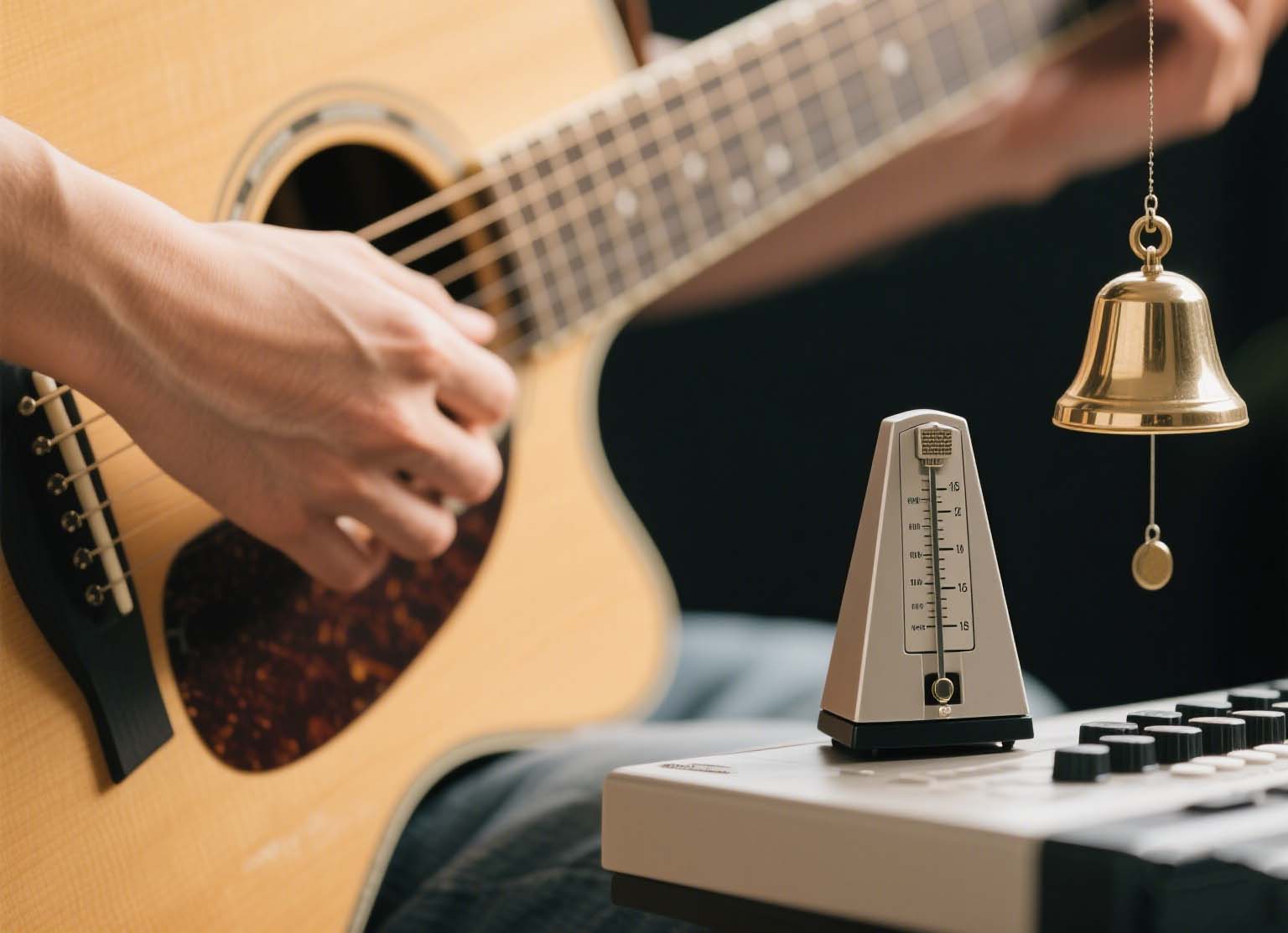I. Understanding Tempo Modulation
1. The Mathematical Foundation
Tempo modulation (also called metric modulation) is a technique that creates a seamless transition between different tempos by establishing a mathematical relationship between them. Unlike abrupt tempo changes, modulation maintains a consistent pulse unit while reinterpreting its rhythmic context. This technique relies on proportional relationships where a rhythmic value in the first tempo becomes equivalent to a different rhythmic value in the new tempo.
2. Historical Context and Applications
While composers like Elliott Carter popularized tempo modulation in 20th-century classical music, the technique appears across diverse traditions: West African drumming (where the relationship between bell patterns creates modulating feels), Indian classical music (where tabla players use layakari to create tempo proportions), and contemporary jazz (where artists like Brad Mehldau use modulation to create rhythmic superimpositions). Understanding these applications provides context for your practice approach.
II. Basic Modulation Ratios
1. The 2:3 Relationship (Triplet Modulation)
Begin with the most accessible modulation ratio. Set your metronome to a moderate tempo (80-90 BPM) and follow this progression:
- Start by playing quarter notes aligned with the metronome clicks.
- Introduce quarter note triplets (3 notes in the space of 2 beats).
- Mentally reinterpret these triplet quarters as your new quarter note pulse.
- The new tempo is now 1.5 times the original (e.g., 80 BPM becomes 120 BPM).
- Practice transitioning back and forth between the two tempos using the triplet as your bridge.
2. The 3:4 Relationship (Quadruplet Modulation)
For a slightly more challenging modulation:
- Begin with your metronome marking quarter notes at a comfortable tempo.
- Play quarter note quadruplets (4 notes in the space of 3 beats).
- Mentally reinterpret these quadruplet quarters as your new quarter note pulse.
- The new tempo is now 4/3 times the original (e.g., 90 BPM becomes 120 BPM).
- Practice feeling both pulses simultaneously before fully transitioning.
III. Advanced Modulation Techniques
1. Nested Modulations
This technique involves chaining multiple modulations to reach distant tempos:
- Start with your metronome at 60 BPM.
- Modulate to 90 BPM using the 2:3 relationship (triplets).
- From 90 BPM, modulate to 120 BPM using the 3:4 relationship (quadruplets).
- The compound modulation creates a 1:2 relationship between the starting and ending tempos.
- Practice each transition point thoroughly before attempting the complete sequence.
2. Subdivision-Based Modulations
This approach uses changes in subdivision to create modulations:
- Begin with eighth notes at 60 BPM (120 eighth notes per minute).
- Switch to playing eighth note triplets (180 notes per minute).
- Reinterpret these triplets as sixteenth notes in a new tempo.
- The new tempo is 45 BPM (180 ÷ 4 = 45), creating a 4:3 relationship with the original tempo.
- Practice transitioning while maintaining absolute rhythmic precision.
IV. Instrument-Specific Applications
1. For Percussionists
Drummers and percussionists can apply tempo modulation in these contexts:
- Use hi-hat patterns to establish the bridge rhythm while maintaining the groove in the original tempo with the bass and snare.
- Practice polyrhythmic independence by having different limbs operate in different tempos simultaneously.
- Create solo development by modulating between sections to build intensity without changing the underlying feel.
- Apply cross-rhythmic modulation by using rhythms like 5:4 or 7:8 to create complex tempo relationships.
2. For Melodic Instrumentalists
String, wind, and keyboard players can explore:
- Use phrase groupings to imply modulation while the accompaniment maintains the original tempo.
- Practice accent patterns that gradually shift to emphasize the new pulse.
- Develop melodic sequences that naturally lead into the new tempo through their rhythmic structure.
- Explore articulation changes that help delineate the transition between tempos.
V. Compositional and Improvisational Applications
1. Structural Tempo Relationships
In composition and arrangement:
- Create proportional tempo maps where each section's tempo relates mathematically to others (e.g., exposition at 80 BPM, development at 120 BPM, recapitulation at 60 BPM).
- Use modulation points as formal markers to delineate structural boundaries.
- Develop thematic transformation by presenting the same material at mathematically related tempos.
- Explore polytempo textures where different instrumental groups simultaneously perform in related tempos.
2. Improvisational Strategies
For improvisers:
- Practice metric superimposition by implying the new tempo while the rhythm section maintains the original.
- Develop modulation vocabulary with prepared phrases that bridge between common tempo relationships.
- Use rhythmic cadences that naturally resolve into the new tempo.
- Explore cue systems for ensemble modulation during improvised sections.
VI. Practice Methodology
1. The 4-Phase Modulation Training System
Follow this structured approach to developing modulation proficiency:
- Perception Phase: Listen to recordings that feature tempo modulation (e.g., works by Elliott Carter, Steve Reich, or Vijay Iyer) and identify the exact modulation points and ratios.
- Mechanical Phase: Practice basic modulations with a metronome set to the original tempo, using a subdivision counter to track the mathematical relationships.
- Internalization Phase: Practice modulating without the metronome, then check your accuracy by reintroducing the metronome at the new tempo.
- Application Phase: Incorporate modulation techniques into your compositions, arrangements, and improvisations.
2. Technology-Assisted Practice
Leverage modern tools to develop modulation skills:
- Use programmable metronomes like Dr. Beat DB-90 that can be set to gradually shift between tempos.
- Explore DAW tempo automation to create practice tracks with precise modulation points.
- Try apps like Time Guru or Metronomics that can create complex click patterns to practice bridging rhythms.
- Record your practice sessions to objectively assess the smoothness of your modulations.
Note: Begin with simple ratios (2:3, 3:4) at moderate tempos (60-80 BPM) before attempting more complex relationships. The goal is absolute precision in the transition—a listener should not be able to detect the exact moment of modulation.






